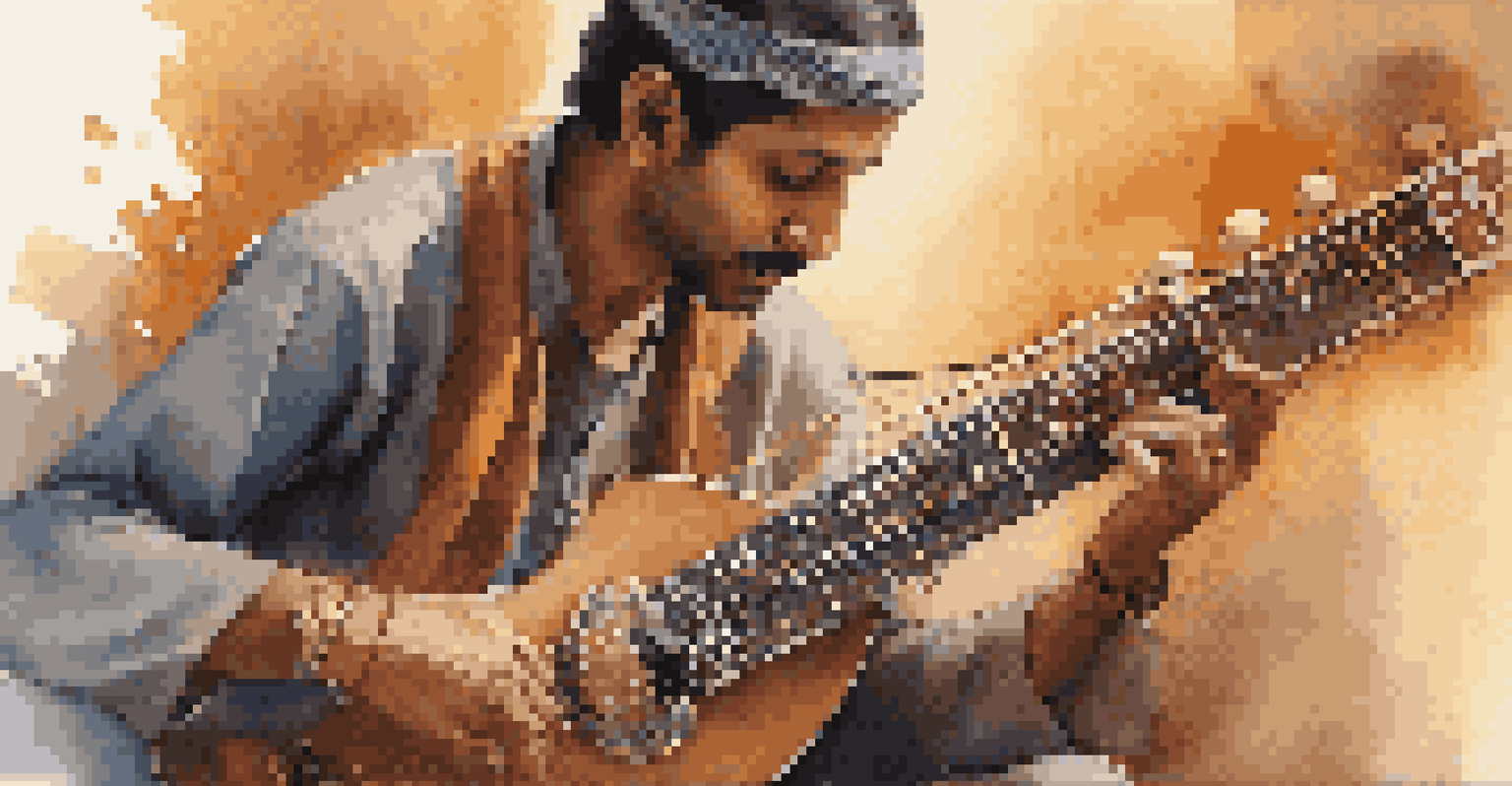Cultural Influences on Sound Design in Global Media

Understanding Sound Design and Cultural Context
Sound design is the art of creating audio elements for various media, including film, television, and video games. It encompasses everything from dialogue and sound effects to background scores. Cultural context plays a vital role in shaping how audiences perceive and relate to these sounds.
Music can change the world because it can change people.
For instance, a sound that evokes nostalgia in one culture may have no significance in another. This highlights the importance of cultural awareness in sound design, as it ensures that the audio experience resonates with the intended audience. By understanding cultural nuances, sound designers can create more immersive and relatable experiences.
Ultimately, sound design is not just about technical skills; it’s about storytelling through audio. By integrating cultural elements, sound designers can enhance the narrative and emotional impact of a project, making it memorable for listeners across the globe.
The Role of Traditional Music in Modern Soundscapes
Traditional music is a cornerstone of cultural identity and serves as a rich resource for sound designers. By incorporating indigenous instruments and melodies, designers can create unique soundscapes that reflect specific cultural heritages. This blend of the old and the new allows for innovative storytelling.

For example, using a sitar in a contemporary film score can evoke a sense of place and connection to Indian culture. Such choices not only enhance the authenticity of a scene but also invite audiences to engage with cultural narratives. The fusion of traditional sounds with modern techniques can lead to groundbreaking audio compositions.
Cultural Context Shapes Sound Design
Understanding cultural nuances allows sound designers to create immersive audio experiences that resonate with diverse audiences.
Moreover, as globalization continues to influence media, traditional music can reach wider audiences, fostering appreciation for diverse cultures. Sound designers play a crucial role in this process, bridging cultural gaps through their creative choices and helping to preserve musical legacies.
Cultural Symbols and Their Sound Interpretations
Cultural symbols extend beyond visuals; they also encompass sounds that carry significant meanings. For instance, the sound of a gong might signify beginnings or endings in many Asian cultures. Understanding these associations is key for sound designers aiming to convey specific emotions or messages.
Sound is the vocabulary of nature.
When sound designers incorporate culturally significant sounds, they create layers of meaning that enrich the viewer's experience. This approach allows audiences to connect on a deeper level, as they recognize and resonate with the sounds that reflect their cultural backgrounds. It’s a powerful way to tell stories that transcend language barriers.
However, it’s essential for sound designers to approach these symbols with respect and authenticity. Misusing cultural sounds can lead to appropriation or misunderstanding, which can alienate audiences. Therefore, thorough research and collaboration with cultural experts are crucial in the sound design process.
Influence of Language on Sound Design Choices
Language shapes not just communication but also the sounds that accompany it. Different languages have unique phonetic qualities that can influence how sound is perceived and used in media. For instance, tonal languages like Mandarin may require a different approach to sound design compared to non-tonal languages.
Incorporating language-specific sounds can enhance the authenticity of dialogues and sound effects. This attention to detail helps to create a more immersive experience, as audiences can better relate to the characters and their environments. It also highlights the intricacies of cross-cultural storytelling.
Traditional Music Enhances Storytelling
Incorporating traditional instruments and melodies into modern soundscapes fosters authenticity and cultural appreciation.
Moreover, the interplay between language and sound can lead to innovative audio designs. By experimenting with how language interacts with sound, designers can create memorable audio signatures that enhance the narrative and capture the essence of diverse cultures.
Regional Sounds and Their Global Impact
Every region has its distinct sounds, from bustling city noises to serene nature sounds. These regional audio characteristics can significantly influence the sound design in global media. By showcasing local sounds, designers can transport audiences to different places and enhance the storytelling experience.
For instance, the sound of a bustling market in Marrakech can immediately evoke a sense of place for viewers, immersing them in the story. Sound designers leverage these regional sounds to create authentic settings that resonate with audiences, regardless of their location. This practice can also promote cultural tourism and appreciation.
As global media continues to evolve, the sharing of regional sounds contributes to a richer tapestry of storytelling. It allows audiences to experience the world through sound, fostering connections and understanding between different cultures. Sound design becomes a vehicle for cultural exchange, bridging gaps between societies.
The Emotional Power of Sounds in Cultural Narratives
Sound has an unparalleled ability to evoke emotions, and this is heavily influenced by cultural contexts. Certain sounds may trigger specific feelings or memories based on cultural associations. For example, the sound of a drum might incite feelings of celebration in one culture, while in another, it might represent mourning.
Understanding these emotional connections is crucial for sound designers. By selecting sounds that align with the cultural context of a narrative, designers can heighten emotional responses and deepen audience engagement. It’s all about creating an auditory experience that complements the visual elements.
Emotional Power of Sounds in Culture
Sounds evoke specific emotions based on cultural associations, making it essential for sound designers to align audio choices with narrative contexts.
Furthermore, the emotional power of sound can transcend language and cultural barriers. A well-crafted sound design can resonate universally, allowing audiences from different backgrounds to share in the emotional journey of a story. This highlights the importance of cultural sensitivity in sound design, ensuring that emotional cues are both powerful and appropriate.
Future Trends: Globalization and Sound Design
As the world becomes increasingly interconnected, sound design is evolving to reflect this globalization. Designers are now blending sounds from various cultures, creating hybrid compositions that resonate with diverse audiences. This trend not only enriches the soundscape but also fosters cross-cultural dialogues.
However, with this blending comes the responsibility to approach cultural elements thoughtfully. It’s crucial for sound designers to honor the origins of the sounds they incorporate, avoiding appropriation and ensuring respect for cultural heritage. This balance will be key in shaping the future of sound design.

Looking ahead, the potential for innovation in sound design is vast. By embracing cultural influences and leveraging technology, designers can create immersive audio experiences that not only entertain but also educate and inspire. The future of sound design lies in its ability to unite cultures through the universal language of sound.